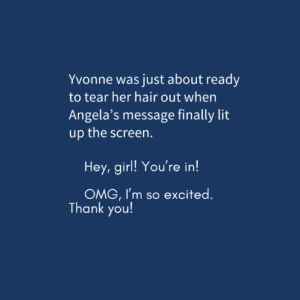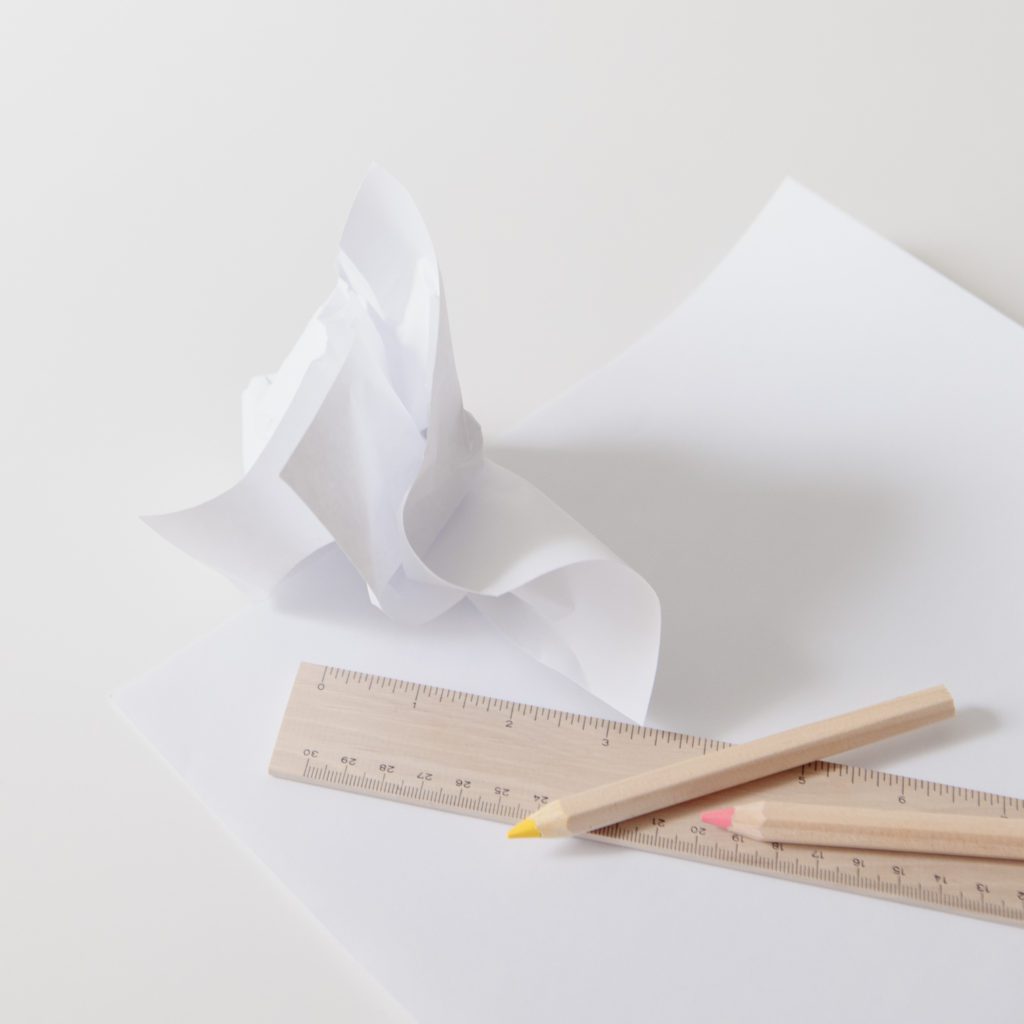How to use dashes: a guide for authors
Get a handle on how to use en and em dashes in fiction and non-fiction writing

Welcome to the much-requested follow-up to my hyphen blog post! I’m here to walk you through how to use dashes in fiction and non-fiction writing, because I know you love them but you don’t always know if you need them.
What are dashes?
Let’s be clear: I’m not talking about hyphens (-) here. We covered that in this post. Dashes are similar but longer horizontal lines that have an entirely different role to play in your writing.
Depending on your preference or your region, you may be more familiar with an en dash (–) or an em dash (—). The en dash is more often seen in British and Australian English texts, while the em dash is common in the land that loves everything bigger: America, of course!
This is not a hard and fast rule: you can use whatever length dash in any location, as long as you’re consistent. Their names are a throwback to the early days of typesetting: an en dash is a line that is approximately the width of the letter N, while the em dash is about the width of the letter M.
Spacing around dashes
You might have noticed that dashes are often used with or without spaces around them. Often, an en dash is ‘spaced’. It looks like – this.
Em dashes are often seen ‘closed’, like—this. But they can also be left ‘open’, like — this.
How to type en dashes and em dashes
If you use a Mac, it’s easy.
- En dash: option + hyphen [-]
- Em dash: option + shift + hyphen [-]
For Windows users, it’s a little more complicated.
In Microsoft Word, you can type a hyphen [-] with spaces around it and it will automatically convert to a dash. For an em dash, type two hyphens without spaces around them and it will convert to a closed em dash.
Or use these shortcuts:
- En dash: ctrl + hyphen [-]
- Em dash: alt + ctrl + hyphen [-]
Outside of Microsoft Office programs, use these shortcuts:
- Em dash: alt + 0151
- En dash: alt + 0150
If your dream is a keyboard with an em or en dash key, you could map a key you don’t often use to type your preferred dash.
Which dash is best?
There’s no right or wrong here. It’s a style choice. In the UK and Australia, we tend to use spaced en dashes. US readers will probably be more familiar with closed em dashes. Consider using the style that your audience will be familiar with. The most important thing is to be consistent, so if you usually use en dashes, don’t just throw in a closed em dash when you feel particularly, er, dashing.
There are a few caveats (of course. This is English we’re talking about). In some cases, an en or em dash is the correct option, regardless of your style for dashes. Let’s go through the uses for dashes.
Dashes that separate a word, clause or phrase from the main clause
This is, I think, the most common use of dashes and the most commonly confused. We use dashes (en or em) to add information, an explanation, a humorous aside, or to interject. I see writers become concerned that using dashes in this way is somehow incorrect, which I think stems from the fact that dashes are just one way of punctuating these kinds of sentences; you can also use parentheses and commas.
Let’s take a look:
- The man – a stranger – was tall and imposing.
You could also write this sentence as:
- The man, a stranger, was tall and imposing.
- The man (a stranger) was tall and imposing.
None of these are wrong, but consider the impact of each punctuation choice. For me, the dashes give the sentence greater tension than the quieter comma or the gentle aside of the parentheses. The emphasis on the stranger is stark, pointing out that the reader should take special note of this information. The parentheses and the commas don’t give the same sense of foreboding or danger. So if you’re debating whether to use a dash or alternative punctuation, try writing them out and seeing if the tone of the sentence changes. Sometimes you might not want the drama of the dashes!
Dashes can also be used to create a sense of humour or sarcasm. Think of them like a comedic beat. For example:
- The kids were helping in the kitchen – well, that’s how they put it.
- Trump said the trial was ‘very terrible’ – it was certainly an ordeal for our reporters.
You can also use a dash instead of a colon. For instance:
- At last, the man told them his name: Michael.
- At last, the man told them his name – Michael.
Or you might be tossing up between a dash and a semicolon. For example:
- She knew all about the new guy – everyone did.
- She knew all about the new guy; everyone did.
And remember, you can use closed em dashes if that’s your style:
- The man—a stranger—was imposing.
- At last, the man told them his name—Michael.
- She knew all about the new guy—everyone did.
As with so much in writing, whether to use a dash or an alternative punctuation mark is up to you and your unique style. You might feel that a colon is too formal for your project, or that parentheses don’t belong in dialogue. These are valid arguments, and if you feel strongly about it, always communicate that with your editor so they know your preferences.
Dashes in dialogue
Another really important use of dashes in fiction (and non-fiction, especially narrative non-fiction) is to set off narrative description when it interrupts dialogue.
You probably already know all about using action beats in dialogue (if not, stay tuned for a blog post soon). When these fall between full sentences, it looks like this (the action beat is in bold):
- ‘I did the job, just like you asked.’ Michael ran a sweaty palm down his leg. ‘I want my money.’
But when the action beat interrupts a sentence, you can use dashes to show action happening at the same time as the speech. Take a look at this:
- ‘I did the job’ – Michael ran a sweaty palm down his leg – ‘and now I want my money.’
If you’re using closed em dashes, it would look like this:
- ‘I did the job’—Michael ran a sweaty palm down his leg—‘and now I want my money.’
We also use dashes to indicate when dialogue is interrupted. Usually (not always!), we use em dashes for this, regardless of whether the overall style is for en dashes or not. Take a look at this:
- ‘Michael, the job just wasn’t worth—’
- ‘I told you, I want my money!’
While a closed em dash is the simplest way to indicate broken-off speech, some style guides will differentiate between a spaced em dash after a complete word to indicate a broken-off sentence, and a closed-up em dash to indicate a broken-off word:
- To indicate an interrupted sentence: ‘Michael, the job just wasn’t worth —’
- To indicate an interrupted word: ‘Michael, the job just wasn’t wor—’
Other style guides might use spaced en dashes instead of em dashes for interruptions. Take a look at this conversation between Taylor and Andie in That Island Feeling by Karina May, published by Pan Macmillan.
- ‘I won’t hear another word about it! We’re taking you away,’ I announce.
- ‘But I don’t –’
- ‘I know the perfect place.’
It’s worth noting that no other punctuation is needed after the dash before the closing quotation mark. For example, please don’t ever write: ‘But I don’t —,’ or ‘But I don’t—.’
What about the sentence following the interruption – shouldn’t that begin with a dash, you might ask? I see this a lot, but the only case for it is when the sentence is interrupted and a different character or the same character finishes the same sentence. Take a look at this example from Not Here to Make Friends by Jodi McAlister, published by Simon & Schuster, in which Lily and Murray are discussing their first job on a reality TV show:
- ‘It’s a long game,’ I said. ‘First, we learn the rules. And then—’
- ‘—we seize the means of production?’
Here, Murray is finishing the sentence for Lily, so the opening dash shows that it’s the one sentence. Similarly, you might have one character’s sentence interrupted by action and dialogue, like this:
- ‘Look, I love him and—’
- The doorbell rang and my parents’ heads swivelled to the sound.
- ‘Darling, the pizza’s here. Can this wait?’ Mum asked gently.
- ‘—I’m going to marry him, dammit!’ I yelled.
- ‘Look, I love him and—’
- The doorbell rang and my parents’ heads swivelled to the sound.
- ‘Darling, the pizza’s here. Can this wait?’ Mum asked gently.
- ‘No, it absolutely cannot!’ I yelled.
Dashes that indicate halting speech
In my guide to hyphens I showed how to use hyphens to indicate stuttered speech. Similarly you can use dashes to show speech that is faltering or hesitant, with dashes between each full word. This is great way to show a character who is flustered, rushed or nervous. Here’s an example with both em dashes and en dashes.
- Em dashes: ‘I don’t—I mean, I can’t—I just—I’m not sure about this, Mandy.’
- En dashes: ‘I don’t – I mean, I can’t – I just – I’m not sure about this, Mandy.’
If you wanted to show the sentence trailing off, you could use an ellipsis alongside your dashes:
- ‘I just – I don’t know … I’m not sure, Mandy.’
Dashes between words of equal importance
While hyphens are used to join two or more words to create a single unit, an en dash can be used in a similar way to show an equal relationship between the words. For example:
- win–win
- work–life balance
- on–off relationship
- doctor–patient confidentiality
Dashes in a range
Again, regardless of your style, use en dashes only to replace ‘to’ and ‘from’ in a range:
- Monday–Friday
- 9.30am–5pm
- 1980–1990
Dashes to indicate omitted text
Want to use swear words without swearing? Use em dashes (and only em dashes). Want to mention a person without actually revealing the name? Use em dashes. A closed em dash indicates that part of the word is missing, while a spaced em dash indicates the entire word has been omitted.
- ‘You are a real piece of s—, you are,’ he said.
- The antique belongs to Mrs — of Highgate.
Author Meg Mason uses this technique to devastating effect in her book Sorrow and Bliss published by Fourth Estate. Two em dashes (indicating two missing words) are used throughout to conceal the name of Martha’s mental illness, forcing the reader to set aside unconscious biases and focus on the character’s experience. Here’s an example of how it was used:
- All of it had been chosen by a woman who as far as she knew did not have — —, a woman who just thought she wasn’t good at being a person.
Common mistakes with dashes
The biggest dash clangers I see as an editor?
- * Not using en or em dashes consistently
- * Adding a comma or full stop after a dash used to indicate an interrupted sentence
Most of the time, though, I think authors have a good instinct for using them to indicate an aside or to separate a clause or phrase within a sentence, so don’t stress about your dashes – follow your heart!
All you have to decide now is which dash you prefer – are you an en or an em dash author?
If you have more questions about how to use dashes in your writing, drop me a line. I can also help you manage your punctuation mishaps with a line and copyedit for your work in progress. Get in touch for a free sample edit.







